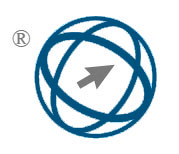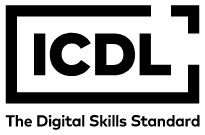KMPPVM-DRM: A KMeans++ Based Dynamic Clustering Approach for Virtual Machine Resource Allocation in Cloud Data Centers
Abstract
Full Text:
PDFReferences
H. S. Malallah, R. Qashi, L. M. Abdulrah
man, M. A. Omer, and A. A. Yazdeen, “Per
formance analysis of enterprise cloud com
puting: a review,” Journal of Applied Sci
ence and Technology Trends, vol. 4, no. 01,
pp. 01–12, 2023.
S. Paul and M. Adhikari, “Dynamic load
balancing strategy based on resource clas
sification technique in iaas cloud,” in 2018
International Conference on Advances in
Computing, Communications and Informat
ics (ICACCI), pp. 2059–2065, IEEE, 2018.
S. S. Gill and R. Buyya, “Resource provision
ing based scheduling framework for execution
of heterogeneous and clustered workloads in
clouds: from fundamental to autonomic of
fering,” Journal of Grid Computing, vol. 17,
pp. 385–417, 2019.
A. Shahidinejad, M. Ghobaei-Arani, and
M. Masdari, “Resource provisioning using
workload clustering in cloud computing envi
ronment: a hybrid approach,” Cluster Com
puting, vol. 24, no. 1, pp. 319–342, 2021.
O. H. Sultan and T. Khaleel, “Challenges of
load balancing techniques in cloud environ
ment: A review,” Al-Rafidain Engineering
Journal, vol. 27, no. 2, pp. 227–235, 2022.
R. Tasneem and M. Jabbar, “An insight
into load balancing in cloud computing,” in
International Conference on Wireless Com
munications, Networking and Applications,
pp. 1125–1140, Springer, 2021.
N. K. Mishra and N. Mishra, “Load balanc
ing techniques: need, objectives and major
challenges in cloud computing-a systematic
review,” International Journal of Computer
Applications, vol. 131, no. 18, pp. 0975–8887,
Y. Lohumi, D. Gangodkar, P. Srivastava,
M. Z. Khan, A. Alahmadi, and A. H. Alah
madi, “Load balancing in cloud environ
ment: A state-of-the-art review,” Ieee Ac
cess, vol. 11, pp. 134517–134530, 2023.
O. K. J. Mohammad, M. E. Seno, and B. N.
Dhannoon, “Detailed cloud linear regression
services in cloud computing environment,”
Informatica, vol. 48, no. 12, 2024.
J. Ma, C. Zhu, Y. Fu, H. Zhang, and
W. Xiong, “Dynamic routing via reinforce
ment learning for network traffic optimiza
tion,” Informatica, vol. 49, no. 8, 2025.
A. M. Manasrah and H. Ba Ali, “Workflow
scheduling using hybrid ga-pso algorithm
in cloud computing,” Wireless Communica
tions and Mobile Computing, vol. 2018, no. 1,
p. 1934784, 2018.
A. Senthil Kumar and M. Venkatesan,
“Multi-objective task scheduling using hy
brid genetic-ant colony optimization algo
rithm in cloud environment,” Wireless Per
sonal Communications, vol. 107, pp. 1835
, 2019.
U. K. Jena, P. K. Das, and M. R. Kabat,
“Hybridization of meta-heuristic algorithm
for load balancing in cloud computing envi
ronment,” Journal of King Saud University
Computer and Information Sciences, vol. 34,
no. 6, pp. 2332–2342, 2022.
N. Er-raji, F. Benabbou, M. Danubianu, and
A. Zaouch, “Supervised machine learning al
gorithms for priority task classification in the
cloud computing environment,” IJCSNS Int.J. Comput. Sci. Netw. Secur, vol. 18, no. 11,
pp. 176–181, 2018.
S. Parida and B. Panchal, “An efficient dy
namic load balancing algorithm using ma
chine learning technique in cloud environ
ment,” International journal of scientific re
search in science, engineering and technol
ogy, vol. 4, no. 2018, pp. 1184–1186, 2018.
C. Vijaya and P. Srinivasan, “Hybrid fuzzy
metaheuristic technique for efficient vm se
lection and migration in cloud data centers,”
Informatica, vol. 48, no. 20, 2024.
F. Davami, S. Adabi, A. Rezaee, and A. M.
Rahmani, “Distributed scheduling method
for multiple workflows with parallelism pre
diction and dag prioritizing for time con
strained cloud applications,” Computer net
works, vol. 201, p. 108560, 2021.
P. Paknejad, R. Khorsand, and M. Ramezan
pour, “Chaotic improved picea-g-based
multi-objective optimization for workflow
scheduling in cloud environment,” Future
Generation Computer Systems, vol. 117,
pp. 12–28, 2021.
Z. Mahmoudi, E. Darbanian, and M. Nick
ray, “Computational resource allocation in
iot fog computing using teaching–learning
based optimization algorithm,” Journal of
Soft Computing and Information Technology,
vol. 10, no. 3, pp. 73–85, 2021.
A. Daghayeghi and M. Nickray, “Nsgaii
based task scheduling model for smart
city applications in cloud-fog environment,”
Journal of Soft Computing and Information
Technology, vol. 11, no. 3, pp. 64–82, 2022.
S. A. Omranian and M. Goudarzi, “Greedy
algorithm for dynamic allocation of intelli
gent services in vehicular edge computing,”
Cluster Computing, vol. 28, no. 1, pp. 1–20,
P. R. Kaveri and P. Lahande, “Reinforce
ment learning to improve resource schedul
ing and load balancing in cloud computing,”
SN Computer Science, vol. 4, no. 2, p. 188,
M. R. Belgaum, S. Musa, M. M. Alam, and
M. M. Su’ud, “A systematic review of load
balancing techniques in software-defined net
working,” Ieee Access, vol. 8, pp. 98612
, 2020.
J. Shankar, I. Hussain, S. Zafar, I. R. Khan,
and A. Khalique, “Effective resource alloca
tion and load balancing in green cloud com
puting,” in International Conference on ICT
for Digital, Smart, and Sustainable Develop
ment, pp. 423–439, Springer, 2024.
Q. Shang, “A dynamic resource allocation al
gorithm in cloud computing based on work
flow and resource clustering,” Journal of In
ternet Technology, vol. 22, no. 2, pp. 403–411,
S. El Motaki, A. Yahyaouy, H. Gualous, and
J. Sabor, “A new weighted fuzzy c-means
clustering for workload monitoring in cloud
datacenter platforms,” Cluster Computing,
vol. 24, no. 4, pp. 3367–3379, 2021.
J. P. B. Mapetu, L. Kong, and Z. Chen, “A
dynamic vmconsolidation approach based on
load balancing using pearson correlation in
cloud computing,” The Journal of Supercom
puting, vol. 77, no. 6, pp. 5840–5881, 2021.
L. M. Al Qassem, T. Stouraitis, E. Dami
ani, and I. A. M. Elfadel, “Proactive random
forest autoscaler for microservice resource al
location,” IEEE Access, vol. 11, pp. 2570
, 2023.
G. Senthilkumar, K. Tamilarasi, N. Velmuru
gan, and J. Periasamy, “Resource allocation
in cloud computing,” Journal of Advances
in Information Technology, vol. 14, no. 5,
pp. 1063–1072, 2023.
M. S. Al Reshan, D. Syed, N. Islam,
A. Shaikh, M. Hamdi, M. A. Elmagzoub,
G. Muhammad, and K. H. Talpur, “A fast
converging and globally optimized approach
for load balancing in cloud computing,”
IEEE Access, vol. 11, pp. 11390–11404, 2023.
S. Singh, P. Singh, and S. Tanwar, “En
ergy aware resource allocation via ms-slno
in cloud data center,” Multimedia Tools andApplications, vol. 82, no. 29, pp. 4554145563, 2023.
D. Kavitha, M. Priyadharshini, R. Anitha,
S. Suma, V. Prema, and A. Vidhya, “Adap
tive dbn using hybrid bayesian lichtenberg
optimization for intelligent task allocation,”
Neural Processing Letters, vol. 55, no. 4,
pp. 4907–4931, 2023.
S. D. S. Mustapha and P. Gupta, “Dbscan in
spired task scheduling algorithm for cloud in
frastructure,” Internet of Things and Cyber
Physical Systems, vol. 4, pp. 32–39, 2024.
I. Jaya, Y. Li, and W. Cai, “Deep reinforce
ment learning based resource allocation in
edge-cloud gaming,” Multimedia Tools and
Applications, vol. 83, no. 26, pp. 67903
, 2024.
H. Lin, G. Liu, W. Lin, X. Wang, and
X. Wang, “A novel virtual machine consol
idation algorithm with server power mode
management for energy-efficient cloud data
centers,” Cluster Computing, vol. 27, no. 8,
pp. 11709–11725, 2024.
A. R. Khan, “Dynamic load balancing in
cloud computing: optimized rl-based clus
tering with multi-objective optimized task
scheduling,” Processes, vol. 12, no. 3, p. 519,
M. A. Alworafi, A. Dhari, A. A. Al-Hashmi,
A. B. Darem, et al., “An improved sjf
scheduling algorithm in cloud computing en
vironment,” in 2016 International Confer
ence on Electrical, Electronics, Communica
tion, Computer and Optimization Techniques
(ICEECCOT), pp. 208–212, IEEE, 2016.
P. Gupta and S. P. Ghrera, “Trust and dead
line aware scheduling algorithm for cloud
infrastructure using ant colony optimiza
tion,” in 2016 International conference on
innovation and challenges in cyber secu
rity (ICICCS-INBUSH), pp. 187–191, IEEE,
X. Zuo, G. Zhang, and W. Tan, “Self
adaptive learning pso-based deadline con
strained task scheduling for hybrid iaa cloud,” IEEE Transactions on Automation Science and Engineering, vol. 11, no. 2, pp. 564–573, 2013.
DOI: https://doi.org/10.31449/inf.v49i31.8761

This work is licensed under a Creative Commons Attribution 3.0 License.









